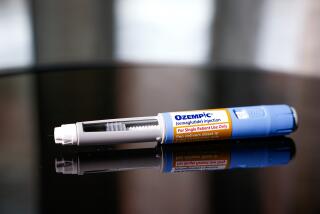A wealth of e-health
- Share via
Every day, millions of Americans are bombarded with health information through direct-to-consumer drug ads on TV. Millions more go online to research a new diagnosis, search for treatments or simply cruise websites devoted to health.
In the month of September alone, 51.9 million Americans -- or 33% of all people who use the Web -- visited health-related websites, according to ComScore Media Matrix, a Reston, Va.-based research firm that tracks Internet use.
The trouble is, much of the information thrown at us on TV or offered up on the Web is misleading or downright wrong. Even reliable-looking research articles can be less meaningful than they appear. How can you tell the difference between credible information and half-truths? Here are 10 tips:
(1) Notice who wrote what you’re reading. It’s easy to just keep clicking on links and find yourself sliding from a reputable site, such as the one on cancer run by the federal government (www.nci.nih.gov), to sites run by pharmaceutical companies or advocacy groups with their own agendas. A group called the Health on the Net Foundation (www.hon.ch) scrutinizes sites for accuracy and offers a seal of approval and links to approved sites.
(2) Check the attribution of any medical article you stumble upon. Usually, the most reliable studies are those published in an authoritative medical journal such as the Journal of the American Medical Assn. (jama.ama-assn.org), the New England Journal of Medicine (www.nejm.org) or other journals whose articles have been reviewed by experts. While you’re at it, look to see who funded the study -- if it’s the company that makes the drug, be more skeptical of the results.
(3) Get a sense of how powerful a study is and exactly what questions it’s asking. Some studies involve only a few people, others many thousands. Some studies are “observational,” meaning that patients just took a drug and doctors tracked what happened. Others are “randomized, controlled double-blind clinical trials,” in which patients are chosen by chance to get, say, a new drug or a placebo, and neither they nor their doctors know at the outset who is in which group. Be sure to notice if a drug was tested in people or rodents. Mice can react very differently to drugs than people do.
(4) Pay attention to how much benefit patients really got. A new cancer drug may extend life, but it’s important to know if it extends life for two months or two years.
(5) Figure out whether an ad or a study is talking about getting a disease or dying of it. The oft-cited, and true, figure that one in eight women will get breast cancer over a lifetime is very scary. However, only one in four women who gets breast cancer actually dies of it, said Dr. Eric Winer, director of the breast oncology center at the Dana-Farber Cancer Institute. Put another way, three in four women who get breast cancer die of something else.
(6) Be wary of studies that lump together several outcomes, what researchers called “combined end points.” One ad touting the cholesterol-lowering drug Lipitor lumps together fatal and nonfatal heart attacks, saying that Lipitor reduces these outcomes by 36%. But the fine print says the reduction in fatal heart attacks, taken separately, was not statistically significant, which means it could have happened by chance, said Dr. Lisa Schwartz and Dr. Steven Woloshin, researchers at the Veterans Affairs Outcomes Group and Dartmouth Medical School.
(7) Be on the lookout for apples-to-oranges comparisons. The five-year survival rate makes it look as though there’s been a huge improvement in the prostate cancer survival rate over the last 30 years. In 1974, 33% of all men diagnosed with the disease died within five years; from 1995 to 2000, fewer than 1% of those diagnosed died. But the actual mortality rate barely budged over that time. The reason the five-year survival rate is so impressive is that we’re catching prostate cancer much earlier now, so men are living longer with the knowledge that they have the disease. And many men whose cancers will never turn deadly are now getting diagnosed with the disease, Schwartz and Woloshin said.
(8) Before dumping prescriptions, assess whether the change might be beneficial or risky. Many doctors and postmenopausal women may have overreacted two years ago when a link was found between hormone replacement therapy and breast cancer -- and millions abruptly stopped taking their daily pills. A large study showed that women taking hormone replacement therapy had a 26% increase in the risk of breast cancer. A less frightening way to state the same thing is to note that 38 of 10,000 women a year taking hormones got breast cancer compared with 30 per 10,000 not taking hormones, said Dr. JoAnn Manson, chief of preventive medicine at Brigham and Women’s Hospital. That’s a difference of only eight women per 10,000 per year -- certainly significant, but depending on a patient’s risk profile, maybe not enough to justify ending a prescription.
(9) Listen closely to TV ad claims, said Dr. Richard Kravitz, a professor of medicine at UC Davis. An ad might say, “there is no treatment more effective than drug X,” he said. “But that may be true because nobody has looked.” Another common ad statement, he said, is that drug X has been proven effective for condition Y, when the real truth may be that 70% of people with the condition got better by themselves and 75% with the drug. So the drug is effective, but not that effective, he said.
(10) The most important tip of all? If a drug or procedure sounds too good to be true, it probably is.






